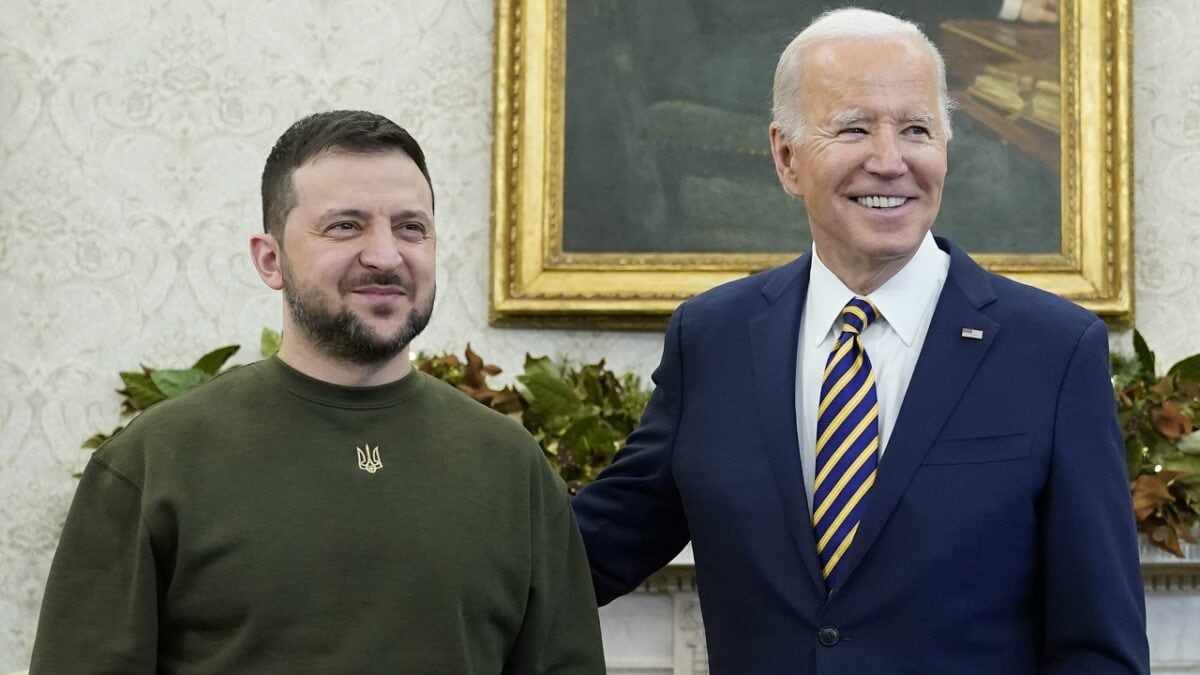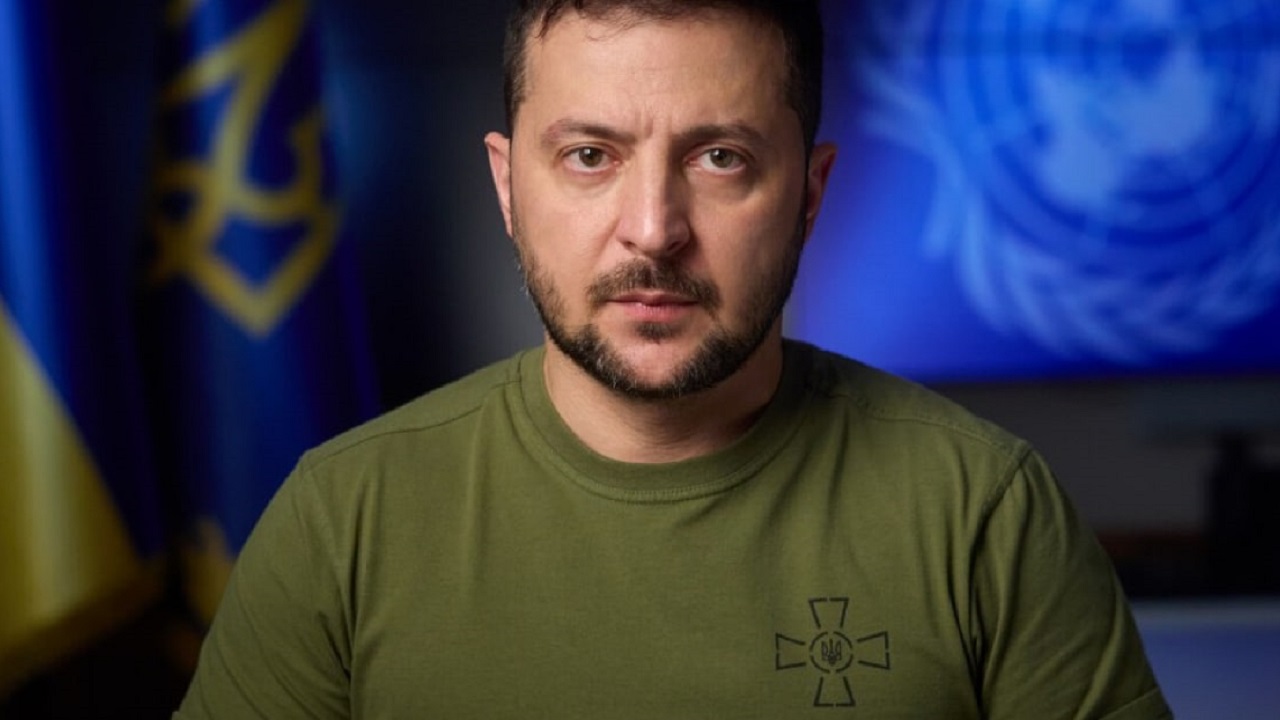On Tuesday, Ukrainian President Volodymyr Zelensky visited the front-line city of Bakhmut, under a savage Russian assault for months.

Volodymyr Zelensky and Biden. White House Handout.
On Wednesday, Zelensky came to Washington, DC, where he met with President Joe Biden and addressed Congress.
Back in September 2021, when Zelensky first visited Washington, he was dressed in a dark suit, white shirt, and dark tie. He was also clean shaven.
This time, the bearded and visibly tired Zelensky came in olive green battle fatigues and pullover, with a trident, a symbol of Ukrainian statehood, pinned to his chest.
The symbolism could not have been clearer. The Ukrainian warrior-president—the ex-comedian who turned down an American invitation to flee after Russia invaded on February 24 and chose to risk his life by fighting for his homeland—had come from the land of war to the land of peace, not as a supplicant, but as a hero and ally.
Fittingly, the meeting with Biden took place below five paintings of American patriots—George Washington, Abraham Lincoln, Franklin Delano Roosevelt, Alexander Hamilton, and Thomas Jefferson.
During his first visit, Zelensky lacked the stature of these great men. During this visit, he could easily measure up to them.
Zelensky’s visit didn’t produce any significant breakthroughs in U.S.-Ukrainian relations. The United States supports Ukraine in its resistance to Russia’s genocidal war, and, as President Biden emphasized, it will continue to do so.
The importance of Zelensky’s visit lies elsewhere: in the symbolism.
Zelensky brought both Bakhmut and himself to America. He reminded Americans of the horrors of the war that Russia is waging against Ukraine’s people; he told Americans that, just as he had not surrendered, so, too, would the people he represents not surrender.
And he insinuated the war and its many atrocities into the American psyche, effectively telling us that there is no avoiding Bakhmut, however much we might prefer to think it doesn’t exist and doesn’t affect us. But it does, Zelensky’s presence said, and it’s not going away.
The Ukrainian war is America’s war. Ukrainians may be dying, but Americans must do the helping.
Zelensky’s trip to Washington affirmed and cemented the Ukrainian-American partnership simply by virtue of its having taken place. Symbolism matters, in politics as in life. Time magazine’s Person of the Year demonstrated that soft power could be as important as hard power.
Faced with Ukraine’s indomitable president and his mastery of symbols and semiotics, all that Putin can do in response is to fire rockets and commit genocide.
The damage to Ukrainians is immense, but as Ukraine’s diminutive president has shown, his people will not cave—a sentiment that all five patriots depicted in the paintings would have shared.
A 19FortyFive Contributing Editor, Dr. Alexander Motyl is a professor of political science at Rutgers-Newark. A specialist on Ukraine, Russia, and the USSR, and on nationalism, revolutions, empires, and theory, he is the author of 10 books of nonfiction, including Pidsumky imperii (2009); Puti imperii (2004); Imperial Ends: The Decay, Collapse, and Revival of Empires (2001); Revolutions, Nations, Empires: Conceptual Limits and Theoretical Possibilities (1999); Dilemmas of Independence: Ukraine after Totalitarianism (1993); and The Turn to the Right: The Ideological Origins and Development of Ukrainian Nationalism, 1919–1929 (1980); the editor of 15 volumes, including The Encyclopedia of Nationalism (2000) and The Holodomor Reader (2012); and a contributor of dozens of articles to academic and policy journals, newspaper op-ed pages, and magazines. He also has a weekly blog, “Ukraine’s Orange Blues.”

